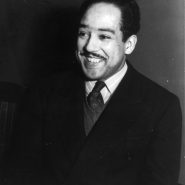Lines Composed a Few Miles Above Tintern Abbey
Wordsworth’s “Tintern Abbey” transforms remembered nature into moral vision — attention ripened by time becomes wisdom.
Daffodils (I Wandered Lonely as a Cloud)
A portable sunrise: Wordsworth’s daffodils show how remembered delight restores the heart in solitude.
The Solitary Reaper
A singer in a field teaches Wordsworth an ethics of listening — mystery honored, music carried inward as lasting solace.
The World Is Too Much With Us
A bracing sonnet against distraction and commerce — Wordsworth pleads for a restored capacity to see the world as sacred.
London, 1802
An urgent apostrophe to Milton — Wordsworth critiques national selfishness and calls for humble, star-like virtue.
The Eve of St. Agnes (Selected Excerpts)
A winter romance in Spenserian stanzas, “The Eve of St. Agnes” stages desire at the threshold of ritual and risk.
To Autumn
“To Autumn” praises ripeness and labor, accepting time’s change with a serenity tuned to soft-dying light.
La Belle Dame sans Merci
A modern ballad of enthrallment and warning, “La Belle Dame sans Merci” leaves desire stranded where no birds sing.
Bright Star
Keats reimagines constancy as intimacy — a star’s steadiness translated into breath and touch.
Ode to a Nightingale
Keats’s “Ode to a Nightingale” captures the longing to escape mortality through the immortal voice of song.
Ode on a Grecian Urn
Keats’s urn contrasts life’s change with art’s permanence — desire held forever just before fulfillment.
To a Skylark
Shelley’s skylark, pure song in flight, teaches a difficult joy — art that consoles without denying human lack.

